How U.S. Corporations Can Stop a Bloodless Coup from Happening
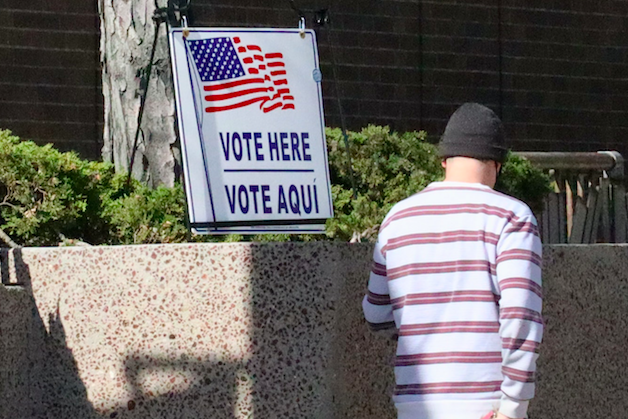
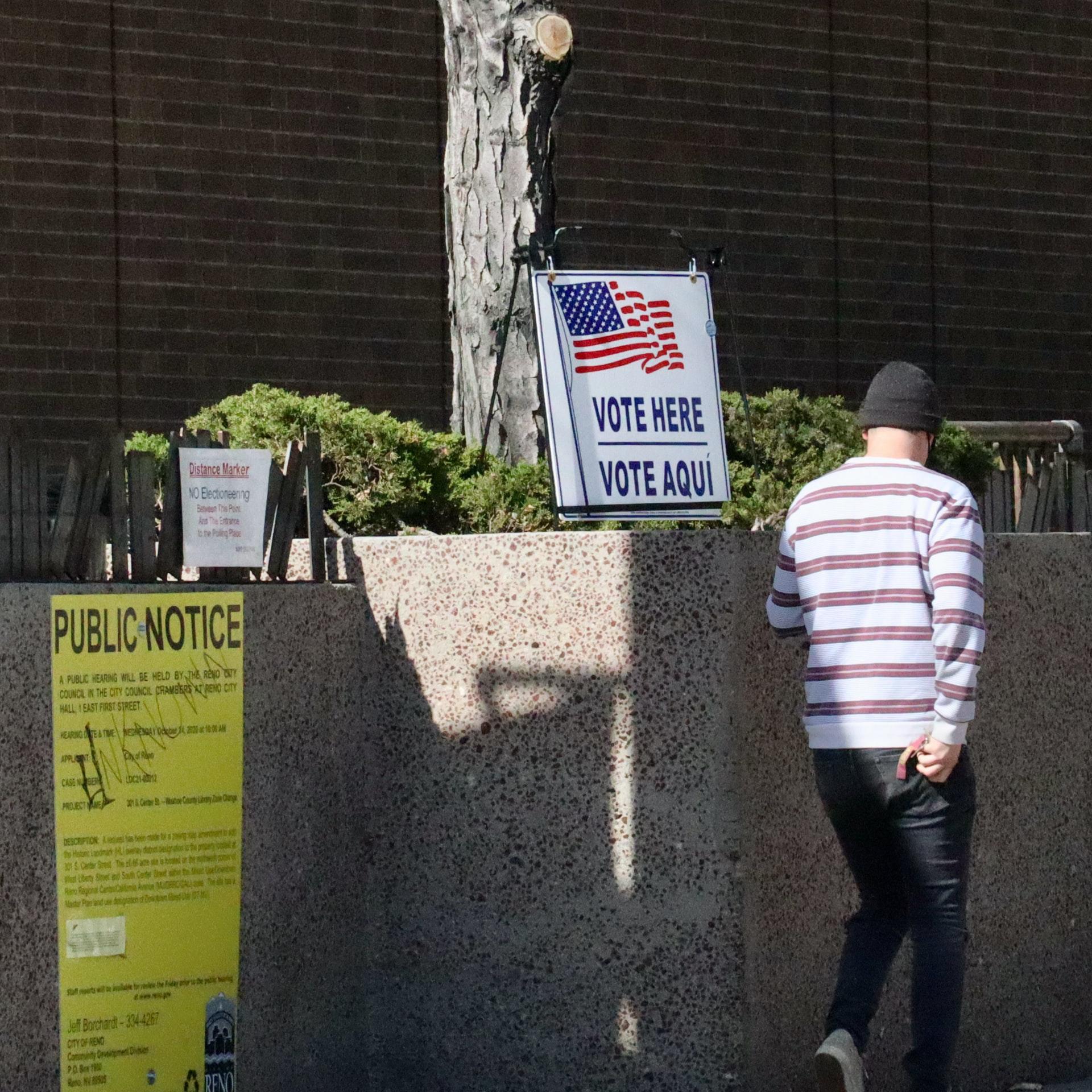
The failed insurrection of January 6 is not the first existential threat faced by American democracy, and it will not be the last for many years to come, with implications for corporate citizens along with everyone else. The attempted bloodless coup continues to spin out in the form of new state-based voter suppression laws that threaten to cement minority rule as a permanent feature. So far, business leaders have stood by to let it happen, but a new movement suggests that they could be stirred into action by motivated consumers.
From bloody insurrection to bloodless coup
The corporate response to the events of January 6 was tepid at first. Although 147 Republican members of Congress publicly supported the insurrection, only a handful of business leaders initially pledged to stop funding their election campaigns.
The violent part of the coup was over by the evening of January 6, but the insurrection continued to spin out as hundreds of new voter suppression laws were introduced in almost every state. More recently, legislation trackers have noted that at least 14 Republican-dominated state legislatures have been taking steps to exert partisan control over the administration of state election offices.
Though some business leaders continued to raise concerns over the looming threat to the democratic process, many others refrained from speaking out publicly, and continued to provide financial support for lawmakers who support insurrection, voter suppression, or both.
The ALEC connection and brand reputation at risk
There is at least one explanation for the sweeping, seemingly coordinated precision of these state-based actions.
Several watchdog groups have noted that ALEC, the conservative American Legislative Exchange Council, has been applying its well-known “bill mill” practice to craft state legislation that makes it more difficult for Democratic-leaning voters to cast a ballot. That’s bad news for the brand reputation of ALEC’s remaining corporate members, who were already tarnished earlier this year when reports surfaced that an ALEC-affiliated lawyer was advising Trump on his “election fraud” strategy leading up to the events of January 6.
ALEC’s impact on brand reputation actually dates back years earlier than the failed insurrection. The organization lost many corporate sponsors during the Obama administration, when its hard line stance on gun control and vigilantism encountered growing opposition from grassroots groups like Moms Demand Action. Other leading brands have recently dropped their ALEC membership over the organization’s reputation as a leading opponent of climate action.
Top brands called to account on ALEC and voter suppression
As it turns out, many leading corporations did follow through on their pledges to cut donations to the federal lawmakers who voted in support of the insurrection on the evening of January 6.
However, that still leaves some of those same corporations vulnerable to criticism over their continued support for state lawmakers who sponsor repressive bills.
Publicity surrounding Pride Month has helped to expose that disconnect. Independent journalist Judd Legum has been tracking patterns of corporate donations related to the failed insurrection, and during Pride Month he turned his attention to spotlight 25 top corporations that profess to support Pride Month, and which score high on human rights indexes, but have donated money to state legislators who support anti-trans bills.
Editor's note: Be sure to subscribe to our Brands Taking Stands newsletter, which comes out every Wednesday.
Now a group of more than 300 voting rights organizations has upped the ante.
In a public letter posted last week on yubanet.com, Common Cause, Fair Fight Action and approximately 300 other voting rights organizations called out leading corporations for continuing to fund lawmakers who support repressive state legislations, through their association with ALEC.
One activist behind the letter is Cliff Albright, the executive director and co-founder of Black Voters Matter.
“We have repeatedly said that corporations must stop funding the elected officials who sponsor and vote for voter suppression, and this demand is equally important in regards to conservative groups and think tanks who fuel the Jim Crow-era approach of creating and replicating racist legislation,” Albright said, adding that “Companies are complicit if they are creating a pro-business environment by supporting anti-democratic organizations and policies.”
In addition to posting the letter publicly, the new campaign is sending it individually to a group of top corporations, and to several trade organizations as well.
A turning point for corporate social responsibility and American democracy
In the past, corporations could safely provide financial support to Republican state law makers, even as they sponsored Pride Month activities, professed to support Black Lives Matter and promoted get-out-the-vote initiatives.
Now that safe space has been shredded by Republican extremists who sponsor legislation that decimates LGBTQ rights, blocks education on structural racism and attempts to silence the votes of anyone who disagrees.
The news media is already taking note of a backlash against right wing authoritarianism by the public in other countries including Russia, China, Hungary, Poland, Slovenia, Myanmar and Brazil — and some are lumping former president Trump in a similar category.
The new letter organized by Common Cause and others is a warning shot that public opinion in the U.S. is coalescing around the preservation of democracy, not the installation of authoritarian rule via these ongoing bloodless coup attempts.
Corporate citizens who wish to maintain the nation’s reputation as a showcase for both democracy and free enterprise have an opportunity to get ahead of the curve by publicly supporting voting rights organizations with real dollars, not just words.
Image credit: Manny Becerra/Unsplash
This NFL Player’s Coming Out Journey Offers a Lesson for the Business Community


Most would assume that someone would have almost nothing to fear in life if that person is 6’ 7”, weighs in at 275 pounds and can run a 40-yard dash in 4.84 seconds. But tell that to Las Vegas Raiders defensive end Carl Nassib, who earlier this week came out as gay on Instagram, becoming the first active NFL player to ever do so.
“Sadly, I have agonized over this moment for 15 years,” Nassib wrote in his public statement. Perhaps it shouldn’t be a shock or headline-grabbing news that an NFL player, or any professional athlete for that matter, comes out as LGBTQ. Then again, one reason why Pride Month is important to many in the LGBTQ community in the first place is to recognize the fact that it was not too long ago when not being straight was something to hide.
To those who still insist that one’s “personal life” should be kept out of the professional world, check in on that belief the next time straight colleagues in the office talk about their families or how they were palling around with their friends over the weekend. On that point, the personal responses of love and support from various athletes and teams to Nassib’s news have been almost more headline-worthy than his very personal announcement itself. Not long ago, there would have been posts with reactions like “I had no idea” or “I’m shocked.”
Editor's note: Be sure to subscribe to our Brands Taking Stands newsletter, which comes out every Wednesday.
Take the reaction of whoever manages the Raiders’ Twitter feed, which issued a simple, “Proud of you, Carl.” That is a step forward for a team with a history of being far from gifted in public relations — just follow the team’s sordid history of moving from Oakland to Los Angeles then back to Oakland and, now, to southern Nevada.
Of course, the team’s current owner, Mark Davis, for some odd reason had to make the point to ESPN that “it doesn’t change my opinion of him as a Raider.” (Shouldn’t any news be about Nassib anyway, not Mark Davis?)
Davis’ comment is a gentle reminder that we still have a long road ahead until people who identify as LGBTQ feel accepted in any setting. Sure, we are largely past the point at which being LGBTQ is a surprise, but we are still in a reality in which employers are quick to tell the community that “yes, we stand by you,” while donating to political leaders who prefer this community stays in the closet.
We have not quite reached the end of the road. Until then, many LGBTQ employees will still feel as if they need to question whether they can be their true selves in the physical or virtual office. And therein lies a reminder for companies that continue to see Pride Month as more of a public relations opportunity than showing a commitment to making their employees feel welcome and comfortable in the workplace. It’s not a huge ask: Ask them about their experiences, listen to them, let them share their stories and, finally, learn from them.
We’ll wrap up by mentioning Nassib’s $100,000 donation to the Trevor Project, an organization that offers free and confidential crisis counseling in its push to prevent suicide by LGBTQ youth. Click here to learn more and to donate to this organization that is saving lives.
Image credit: Daniel Álvasd/Unsplash
Big Tech Has a Racial Wealth Gap Problem


More than a year after the murder of George Floyd, we have seen plenty of companies jump on board the racial equity, equality and diversity trains. But according to a recent report issued by The Conference Board, much work lies ahead in closing the racial wealth gap. In a nod to the CEOs who publicly said they have seen the problem and want to address it, the report’s authors say, “Acknowledging the problem is an important step in solving it.”
Nevertheless, the data overwhelming shows that companies, notably those in tech, have a long way to go.
The Conference Board cites statistics that aren’t encouraging. For example, in 2010, Black men on average earned 18 percent less than white men. A decade later, that gap had widened to 24 percent, much of which the report’s authors attribute to the decrease of Black workers in higher-paying sectors and jobs.
The racial wealth gap is even more prominent when looking at the wider tech sector. As we’ve seen in many headlines over the past decade, technology companies have generated a huge increase in top earners. But only 4 percent of those highest income earners in tech are Black Americans, compared to 6 percent across other industries.
The numbers aren’t stacked against all Black Americans. In the smaller tech hubs of Atlanta and Washington, D.C., for example, Black employees in tech who are included within the highest income earners are at a respective 12 and 13 percent of those cities’ total tech workforce. But move farther west, and the numbers crater: 2.3 percent in Austin, 2 percent in San Francisco, 1.6 percent in Seattle and an embarrassing 0.8 percent in the capital of Silicon Valley, San Jose. “The tech industry employs relatively few women, Black and Latinx people,” one Bay Area business journal reported this spring. “But Silicon Valley does a worse job than the rest of the country.”
Underrepresentation is in large part what is behind the stubborn racial wealth gap. Tech companies often tend to hire from what they feel are the top U.S. universities, overlooking the potential in hiring from historically black colleges and universities (HBCUs). Apple is one tech giant that says it will tackle this oversight.
The bottom line is that if companies lack the will to hire Black workers, and continue to lose more of them through attrition, the chances are slim that any of them will rise through the ranks and be promoted for jobs with more responsibility and, of course, a more lucrative paycheck.
But as mentioned earlier, geography also plays a part in the racial wealth gap. “The new willingness of firms to hire remote workers could help employers located in areas with small Black populations to recruit and retain Black workers anywhere in the U.S.,” the report’s authors concluded. “As evidence from Washington, D.C. and Atlanta shows, these workers exist. Adjusting the geography of recruitment to target Black workers can make a difference.”
Another way for tech companies to meet their hiring goals is to open offices, or remote hubs, in regions that have a high concentration of Black workers. That could further dismiss the oft-cited myth that “these workers don’t exist.” They do exist and have for a long time. Perhaps it’s a matter of recruiting where they live rather than limiting a search to the metropolitan area surrounding a company’s headquarters.
Finally, this is a time that should be less about setting far-off diversity and inclusion goals and more about tech companies taking a deep look within. If a company is unsure whether pay disparity is a problem, the only way leadership can know for sure is to undertake a pay audit. Completing such an exercise can help locate and correct those salary gaps — tech companies that have already done so include Amazon, Apple, Cisco and Microsoft.
“Without a significant change, racial wage gaps may continue to increase in the coming years,”The Conference Board’s Report concluded. “It will be critical for CEOs to continue to prioritize diversity as a means to close racial wage gaps.”
Image credit: Daniel Thomas/Unsplash
Activist Shareholders Now Have Airlines on Their Radar
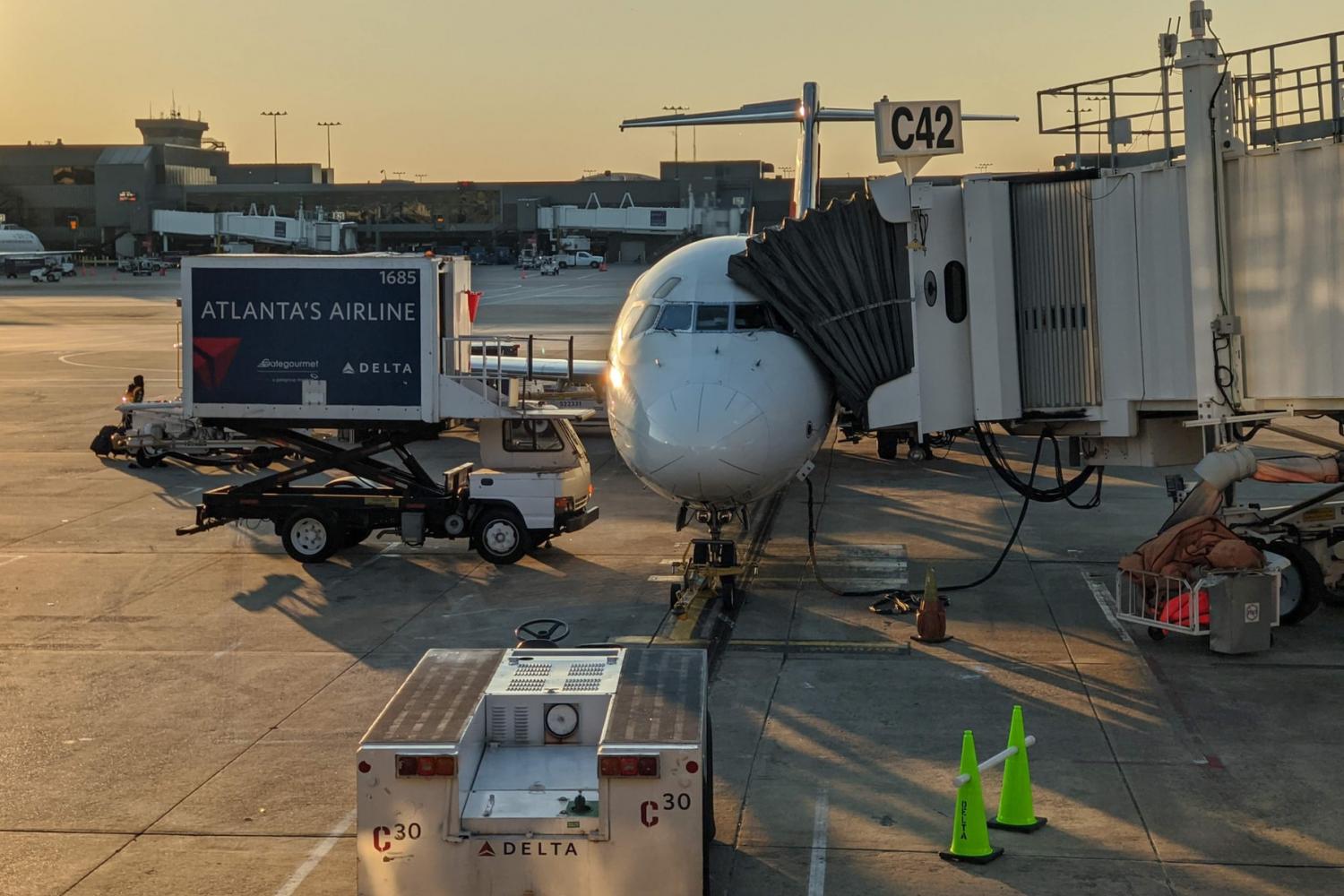
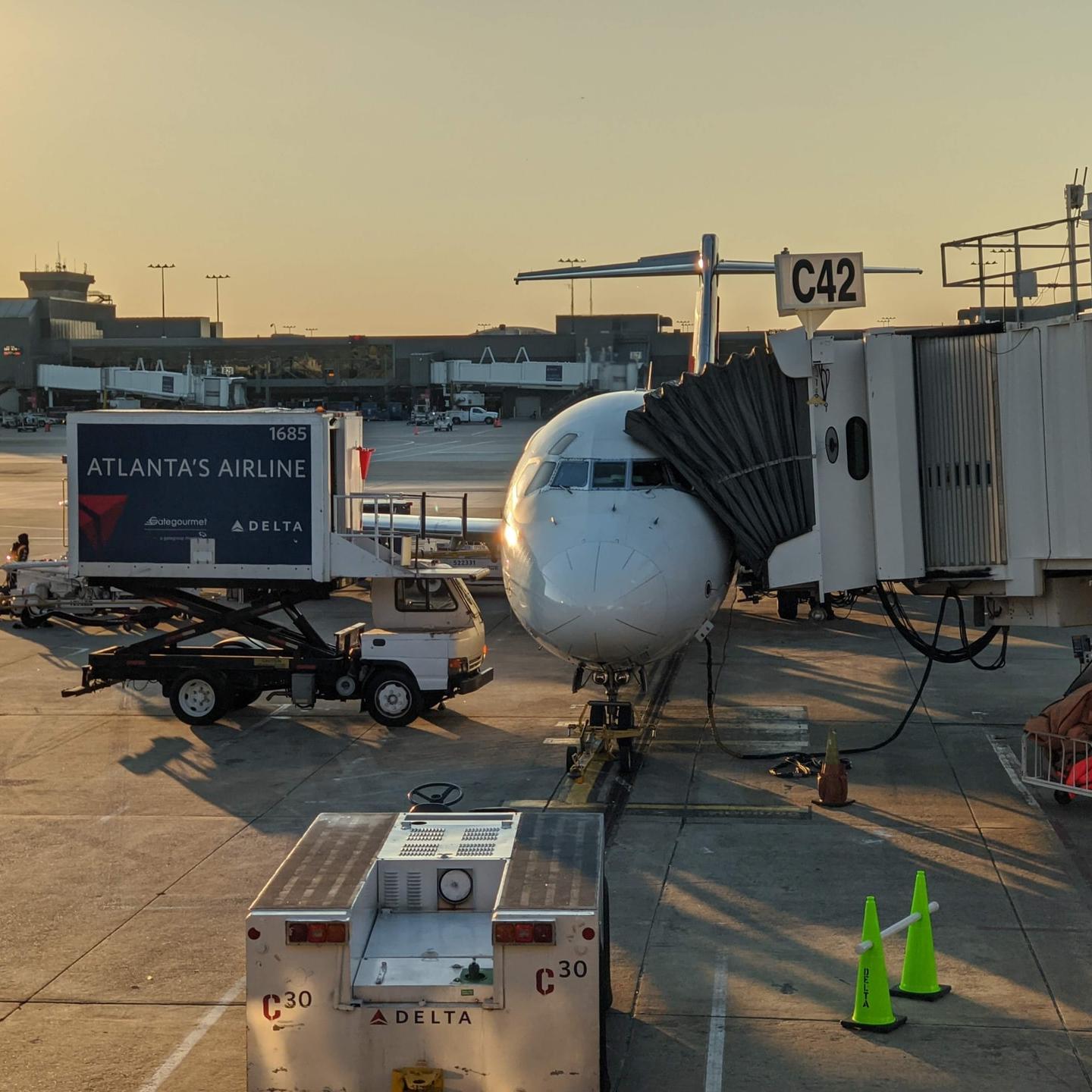
The world's leading airlines have long dabbled in sustainable aviation fuel, tinkered with artificial intelligence to shave off emissions where they can, introduced lighter and more efficient aircraft, and even floated the idea of electric planes to ferry passengers sometime in the near future. But for more activist shareholders, those measures are not enough.
Here in the U.S., these investors are not only filing more proxy statements on social and environmental issues, but as we learned last month with ExxonMobil, they are also winning, and winning big time. These aren’t the pyrrhic victories of a decade ago, when a losing effort at scoring 20 to 30 percent “yes” votes was considered progress and closing in on 50 percent was a huge coup.
Airlines are now feeling the same pressure from activist shareholders that global energy giants are experiencing.
For example, last week Delta Air Lines shareholders voted, by more than 62 percent, to seek information on how the company’s climate lobbying aligns with the goals of the 2015 Paris Agreement.
“We commend Delta Air Lines for responding to CDP’s annual climate change survey, including information on the company’s direct … and indirect … lobbying efforts related to climate change and their consistency with corporate policy,” BNP Paribas Asset Management wrote in its shareholder proposal. “[But] how does Delta work to ensure that its direct and indirect lobbying activities align with the Paris Agreement’s goals, and what does the company do to address any misalignments it has found? The investors received no response to their letter.”
They may soon get that response, based on that landslide vote.
Last month, a similar shareholder proposal asking United Airlines to do the same also passed, and by a wider margin of 65 percent. This group of activist shareholders, the U.S. Presbyterian Church, requested a similar report of Delta, one in which the company would evaluate its lobbying activities versus the Paris Agreement and share how it would “mitigate risks presented by any misalignment.”
United asked its shareholders to vote no, stating: “The Company is committed to operating an environmentally sustainable and responsible airline. This means we are constantly working to minimize our environmental impact and are continuously looking for new ways to reduce our carbon footprint in the air, on the ground and at our facilities.” The company also stated its long-term sustainability goals, while saying it had improved its overall fuel efficiency by 45 percent since 1990.
Unmoved, shareholders sided with the Presbyterian Church’s group of investors. Those votes occurring at the shareholder meetings of Delta, United and other companies indicate it’s not only the energy companies that have to take bolder action on climate change, but their largest customers need to do the same as well.
“The majority votes — one as high as 76.4 percent — and the string of corporate commitments are an indication of how serious the investment community is about tackling what they view as the ever-increasing systemic risk of climate change,” the Interfaith Center on Corporate Responsibility and the nonprofit Ceres wrote in an emailed statement to TriplePundit. “Investors want strong climate policies to protect the economy and their portfolios and so they can make investment choices with greater certainty.”
The shift toward pushing airlines for greater disclosures about their climate change impacts has been percolating for some time. Across the pond, for example, shareholders of Air France-KLM asked the company’s board several pointed questions about its work on climate action during an annual general meeting last year.
Recent events have shown that we’re long past the “asking questions” phase. Now, investors want not only answers, but also proof that changes are coming. “Investors have made clear that they want good, solid data when it comes to sustainability performance," 3p’s Amy Brown wrote in late 2019, “and companies are increasingly giving investors what they want.”
Image credit: Avery Murray/Unsplash
Mexico’s GMO Corn Ban: An Obstacle or Non-GMO Opportunity?


The old saying goes, “if life gives you lemons, make lemonade,” is appropriate for the United States’ position over Mexico’s ban on the use of glyphosate herbicide and imports of genetically modified corn by 2024. The predominant reaction by U.S. agribusiness to Mexico’s stance is to see obstacles and to bully and file lawsuits to stop the bans. But a small but growing segment of U.S. agriculture sees an opportunity to “make lemonade” by supplying Mexico with what it wants: non-GMO corn.
As Bill Niebur, president of High Fidelity Genetics, an Iowa-based non-GMO corn seed company, says: “Could we supply Mexico? Absolutely. In terms of acres, it’s not a problem. Instead of criticizing Mexico, let’s provide it to them.”
Promote agroecological and sustainable practices
Last December, the government of Mexico issued a decree last December calling for the replacement of controversial glyphosate herbicide and imports of GMO corn in the country by January 31, 2024.
Mexico’s Vice Minister of Agriculture, Victor Suárez, says his country issued the decree because the government is “committed to a fair, healthy, sustainable, and competitive agri-food system” and to “intensively promote agroecological and sustainable practices and reduce the use of agrochemicals.”
Suárez says the main reasons for Mexico’s bans are growing concerns about the safety of glyphosate and GMO contamination threats to Mexico’s staple and sacred crop: corn.
Further, the minister cites a growing number of published studies showing negative impacts of glyphosate. “There is rigorous scientific evidence about the toxicity of this herbicide, which demonstrates the impacts on human health and the environment,” he says.
Finally, imported GMO corn threatens Mexico’s native corn varieties. Mexico is a center of diversity for corn with some 59 locally adapted, traditional corn varieties, added Suárez.
“The risk is that imported (GMO) maize will be used as seed and can therefore contaminate the corn of neighboring farms,” he says.
Suárez also cites a study showing that 90.4 percent of corn tortillas consumed in Mexico contain GMO corn sequences, as did 82 percent of corn flours, cereals and snacks. He calls the presence of GMO genes in these staple Mexican foods “unacceptable.”
Expectation: induce imports of non-GMO yellow maize
Mexico’s justifications for the bans seem reasonable but not to U.S. agribusiness. At stake are 16.5 million metric tons (MMT) of U.S. corn exports—virtually all GMO—to Mexico each year worth $3 billion. As a result, U.S. agribusiness groups are putting pressure on Mexico over the bans. A series of emails obtained using the Freedom of Information Act by the Center for Biological Diversity describe how pesticide industry lobby group, CropLife America, and pesticide and GMO seed producer, Bayer, are working with the Office of the U.S. Trade Representative (USTR) to pressure Mexico into abandoning the bans.
An editorial in AgriPulse called on the Biden Administration to “address” the bans: “Taking action (against the bans) would be an important defense of American agriculture, and modern agricultural production overall.”
Suárez says that Mexico plans to increase domestic production of non-GMO corn to make up for the lost U.S imports with the aim to achieve “food self-sufficiency” but he also wants to import non-GMO corn from the U.S.
“Imports of yellow maize will prevail for now, and the expectation is to induce imports of non-GMO yellow maize,” he says.
U.S. non-GMO corn suppliers are willing and able to meet Mexico’s needs, according to Greg Lickteig, a long-time grain industry veteran and consultant with Omaha Grain.
“No question, the U.S. could meet Mexico’s demand should they seek only non-GMO corn,” he says.
Mexico’s need for 16.5 MMT of corn is less than 5 percent of the U.S.’s annual corn production, according to Lickteig. In 2020, U.S. farmers planted 7.49 million acres of non-GMO corn, according to organic and non-GMO market data firm Mercaris. That is just 8 percent of the U.S.’s total corn acreage of 90 million acres.
U.S. could easily supply increased Mexico demand for non-GMO corn
There are many U.S. suppliers of non-GMO corn who are meeting the needs of a growing non-GMO market in the U.S. estimated to be worth $30 billion.
One of those suppliers is Illinois-based Clarkson Grain. CEO Ken Dallmier is also confident the U.S. can supply Mexico with both yellow and white non-GMO corn.
“Given proper market incentives, the U.S. could easily supply the increased Mexico demand for non-GMO corn,” he says. “Mexico is a key trading partner, and all the logistics of Mexican grain import come through the U.S. It’s matter of planning and market.”
Proper market incentives include premiums for farmers to grow non-GMO corn, which requires more management than GMO corn.
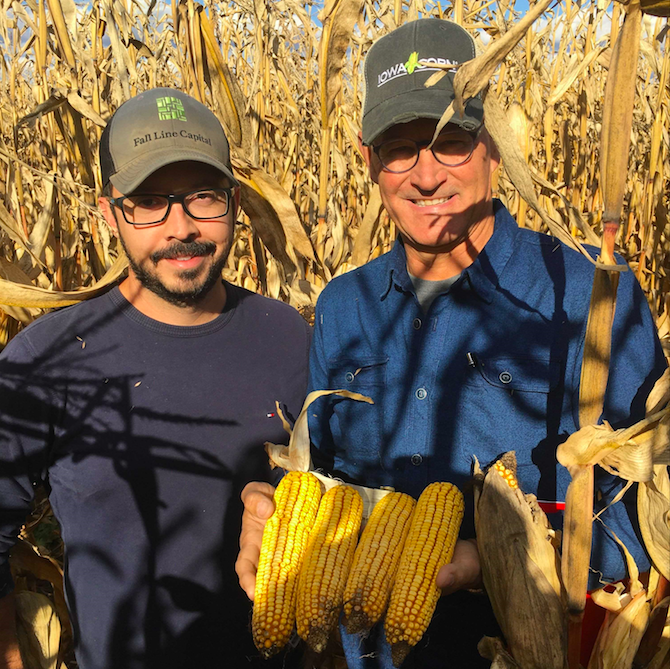
U.S. farmers would also need good varieties of non-GMO corn seed, and Bill Niebur is confident that his company and other U.S. seed companies can provide those.
“We are testing non-GMO and GMO hybrids, and our non-GMO products are doing really well,” says Niebur, who is former global vice president of research and development at Pioneer Hi-Bred.
Niebur says the U.S. should view Mexico’s bans on glyphosate and GMO corn as an opportunity to enhance its trade relationship with Mexico.
“We need to let them know we’re very serious and respectful about their needs and challenges and to better understand what they trying to accomplish and work together to see how we can do that,” he says.
Niebur and other non-GMO corn suppliers understand business trends in ways that other parts of U.S. agribusiness seem to have forgotten.
“The customer is always right,” he says.
Previously published here.
Image credits: Masienda, Bill Niebur
Thrifting May Soon Slay the Fast Fashion Beast


Thrifting has become far more of a thing over the past couple of decades since Carrie Bradshaw was shown riffling through secondhand shops in Manhattan for a black vintage dress to go with her ridiculously priced Manolo Blahniks.
Today, thrifting has become mainstream, and far from the occasional visit to the local vintage store, it’s become a beast in the fashion world: One, in fact, that could become even larger than the global fast fashion industry.
At least, that’s according to the online consignment and thrift store ThreadUp, which in its latest Resale Report concluded that if trends hold up, the entire secondhand market (which includes resale and traditional thrift and clothing donations), could become an $80 billion market by 2029. Compare that with fast fashion, which ThreadUp says may be a $43 billion market that same year.
Even if you parse out projected conventional thrift sales for 2029, we’re talking a $36 billion market. Granted, what constitutes “thrift” versus “resale” depends on who you ask, so if giving clothing a second (or third or fourth) life is your way of shopping, expect more competition in the coming years.
As NPR reports, Gen Z is driving much of the thrifting bandwagon. The 1997-ish and later crowd has already been disrupting norms, including how they view investing. Now, the evidence suggests they aren’t just transforming fashion — they are owning it, on their terms.
NPR profiled these Gen Z thrifters as motivated by finding that side hustle, along with concerns about the fashion industry’s impact on the environment. And, of course, thrifting is about finding that unique item of clothing. “Thrifting has been normalized," 21-year old Eva Perez told NPR. "Since so many people are doing it, it's now seen as cooler. It's seen as better than going to the mall. Younger people find it fun, like a game. A hunt for something unique.”
Adding to the growing chase for all things used is, unsurprisingly, social media. We’re beyond the days of the disorganized neighborhood thrift shop through which only the bravest would want to search. “Gen Z, in particular, has evolved the concept of thrifting, and there are three main factors driving this phenomenon: the input from brands, the role of influencers and the creation of experiences,” wrote Emily Johnson for The Drum.
The ability to show anyone and everyone how thrifting can be cool has led to the popularity of apps such as Depop, on which Etsy plunked $1.6 billion to acquire earlier this month.
Intuitively, one assumes thrifting is a net positive for sustainability: The more clothes are given another life, or two or three lives, the fewer new clothes end up purchased. Further, if dedicated thrifters take better care of their clothes, they last longer — again, decreasing the need for new clothing.
The truth is a bit more complex. There’s a problem not limited to social media influencers: If people keep buying more and more clothes to keep up with fashion trends, that doesn’t necessarily change the reality that more clothes are getting bought, worn and eventually no longer used. “The impetus to get rid of clothing is often charitable, but the more clothing that is contributed and viable, the more fashion cycles speed up,” Jennifer Le Zotte of the University of North Carolina Wilmington explained in an interview with Vox earlier this year.
If thrifting does become mainstream, especially due to how technology has changed it (and, for all we know, online thrifting in five years could become a thing of the past, like Netscape or Peapod or Gay.com), then it could have an effect on fast fashion.
That may already be the case. Last year, H&M launched its own resale platform to buy and sell clothing made under one of the company’s brands. Critics said explaining any part of that decision as a “sustainable” one was a stretch, considering the accusations lobbed at H&M and its competitors over the years — including overproduction, encouraging overconsumption, dubious labor practices and the often marginal quality of the clothing items.
Of course, the same could be said of the massive growth in the online thrifting business. Thrifting, resale and vintage aren’t the same thing, depending on who you ask. “Vintage” to many means at least a couple decades old; thrifting could include someone dumping a carload of old clothes at the local Goodwill or Salvation Army; and if you scored that resale item that still had the price tag on… well, the overconsumption part of this conversation still merits discussion, right?
Image credit: Tyler Nix/Unsplash
Natural Infrastructure Can Boost the Post-Pandemic Recovery


Mitigating flooding and erosion, sequestering carbon, purifying water and providing a habitat for aquatic species — natural infrastructure projects can add resilience to an economic recovery from COVID-19. They can also create needed jobs.
Along with its storms and droughts, global warming continues to cause the seas to rise at a rate of one-eighth of an inch per year. Natural infrastructure such as wetlands, reefs, mangroves, oyster reefs and sand dunes can help communities avoid costs of erosion, flooding and storms that are coming with climate change.
Wetlands and other natural infrastructure projects save money now - and later
Compared with gray infrastructure solutions, natural infrastructure can also bring cost-savings. The CEO-led World Business Council for Sustainable Development (WBCSD) has outlined direct financial benefits from leveraging natural processes, including capital cost savings, operation and maintenance savings and greater returns on investment than gray infrastructure alternatives.
Indirect effects such as improved operational safety, social license to operate and enhanced public health and recreational opportunities also contribute to a stronger business and improved reputation, the WBCSD notes.
According to the Canadian non-profit Municipal Natural Assets Initiative, the town of Riverview, New Brunswick, alone could save $2.3 million in stormwater management by protecting four wetlands.
And what if a natural infrastructure solution does cost more to implement at the outset? A response from Joyce Coffee and Camilla Gardner may help: “By…focusing more on what is to be gained rather than how much it might cost, our investment decisions can be more informed and equipped to center equity, real climate risk, and the well-being of all,” they wrote for TriplePundit in November.
Where natural coastal infrastructure is already working
Some countries and localities are already leveraging natural infrastructure solutions to coastal erosion, sea-level rise and flooding:
This time last year, New Zealand budgeted $1.1 billion to create 11,000 environmental jobs — part of which would focus on restoring wetlands and stabilizing river banks.
“These initiatives show how environment-related actions can make a meaningful contribution to the post-COVID-19 economic recovery,” Environment Minister David Parker said.
In Apalachicola Bay, Florida, the Apalachee Regional Planning Council and WSP have been establishing natural infrastructure to protect a highway that acts as a hurricane evacuation route.
WSP writes that millions of dollars have been spent over the years in an attempt to protect the route using gray infrastructure, without success.
The natural solution involves developing an intertidal marsh through oyster reefs. According to WSP, the oyster fishery in Apalachicola Bay, the largest in the country, has struggled in recent decades. New oyster reefs will not only weaken incoming waves and diminish roadway erosion, but may also benefit the coastal economy.
When Hurricane Harvey came barreling through Texas in 2017, costing an estimated $125 billion in damages, a reclaimed urban wetland in the community of Clear Lake kept floodwaters away from homes.
The 200-acre wetland and green space, Exploration Green, was formerly an abandoned golf course. Now, it can hold up to 500 million gallons of stormwater while providing a home to over 1,000 native species and recreation to community members.
Civilian Climate Corps and natural infrastructure
President Biden’s Civilian Climate Corps (CCC) — a take on the Civilian Conservation Corps of the 1930s — allocates $10 billion to employ thousands in creating infrastructure that defends the nation from the threats of climate change. A January executive order stipulates that the corps should “aim to conserve and restore public lands and waters, bolster community resilience, increase reforestation, increase carbon sequestration in the agricultural sector, protect biodiversity, improve access to recreation, and address the changing climate.”
In its decade-long run, the Civilian Conservation Corps built more than 300,000 dams, almost 50,000 bridges and 3,500 fire towers, Mary Ellen Sprenkel, president and CEO of the Corps Network, said in a testimony before the House National Parks, Forests and Public Lands Subcommittee earlier this year.
Specifics of the new CCC haven’t yet been published, but the program could push the nation to embrace natural infrastructure solutions more widely, and thus reap broad benefits.
Image credit: Kevin Ortiz/Unsplash
Four Reasons Why the ‘Generous’ Unemployment Benefits Trope Isn’t True
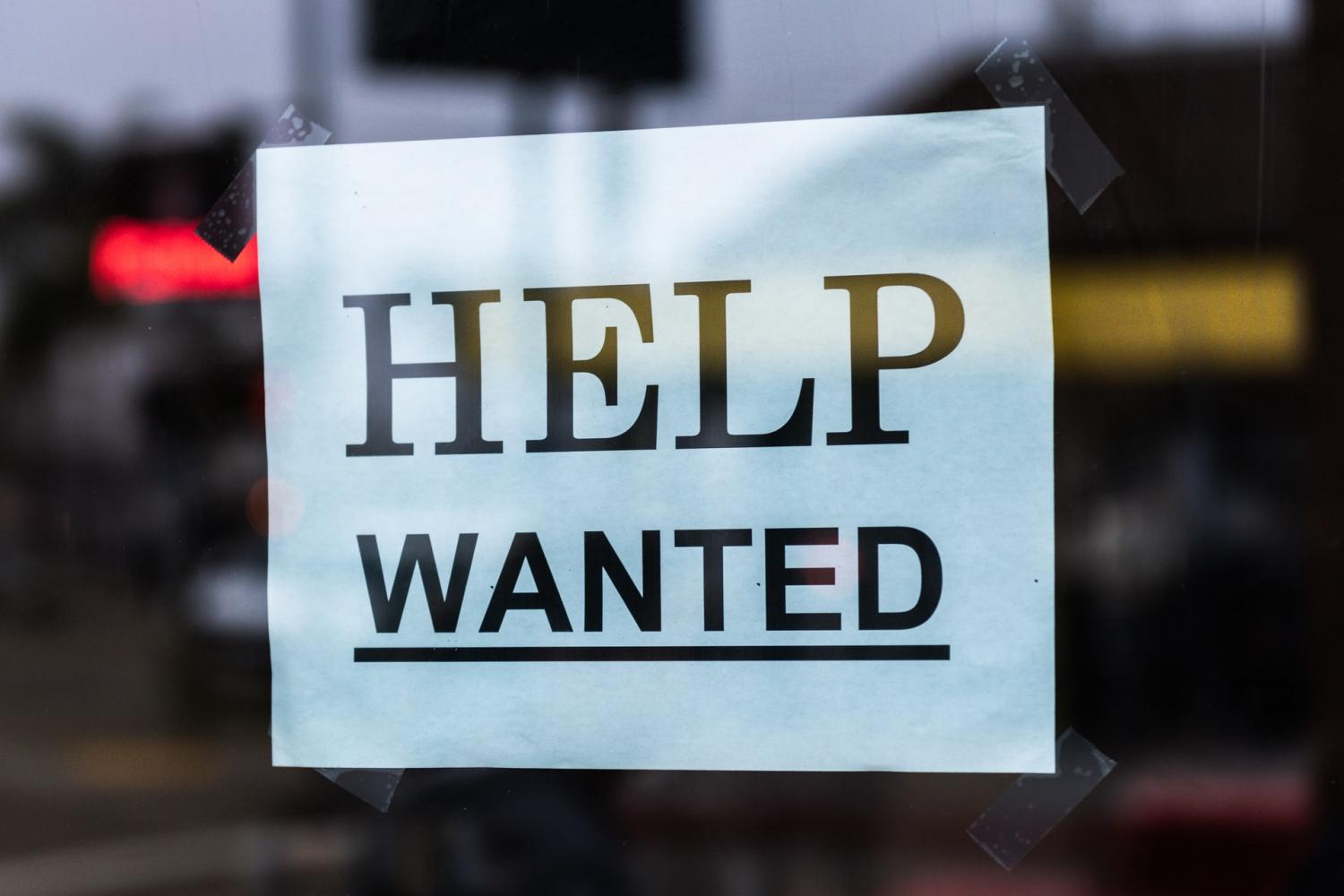

We keep hearing it from politicians and business leaders: There’s a worker shortage in part because of the temporary unemployment benefits that are paying people an extra $300 a week. As a result, more states are cutting off those funds in the coming weeks, if they have not done so already. The thinking goes that as those unemployment benefits dry up, people will be forced to work.
The truth is far more complicated than any assumption that people just want to stay home because it pays more.
Here’s what many businesses must confront: If they seek to hire again, such an effort will take some creativity on their part — that is, if starting by paying people a decent wage qualifies as “creative.” Paying a higher hourly wage is only the start: Compensation may need to include incentives, whether there’s a bonus pay structure or additional benefits such as childcare or reimbursement for transportation costs.
And some workers just want that an assurance of their safety, whether it’s from the virus itself or from the behavior of customers that made the social media wildfire rounds last summer.
By and large, we see four key reasons why it’s been hard for many businesses to hire employees. And it’s not that suddenly the world has been turned upside-down; the truth is that it has been that way for many wage earners, and they aren’t taking it anymore.
Someone has to do all that unpaid work
We’ve long known women have carried the burden of doing additional work around the home and for their families, even if they are working full time. Then the pandemic hit, and with it came the added the stress of ensuring kids could succeed at remote learning as schools shut down. The government may have sent out stimulus checks and additional unemployment insurance, but that doesn’t mean affordable childcare became an option, if it could even be found in the first place.
Given the odds that any kind of infrastructure bill with a “human infrastructure” component isn’t going to happen, companies may need to rethink how they recruit talent.
“Employers can also take measures to ensure that women who have left the workforce during the pandemic are offered opportunities to make up for lost time,” wrote Kweilin Ellingrud and Liz Hilton Segel for Forbes earlier this year. “More broadly, business leaders should reassess workplace norms to increase work-life flexibility for all employees.”
Many of the jobs out there aren’t paying squat, but that doesn't mean the preference is to sit from home
One state that will no longer accept federal funds for COVID-related unemployment benefits, Tennessee, runs its own job board for prospective employees. But as one local television station and some on social media have pointed out, only 8,500 or so of those jobs paid more than $20,000 a year. “That's $1,666 a month. Average rent in TN is $1,468 a month. That leaves you a full $6.60 a day to eat, assuming you don't spend on frivolous other expenses like say, oh, electricity,” was one response on Twitter.
Companies have had to respond in kind; note this Washington Post profile of the restaurant sector. Many eateries posted job openings once local economies began to emerge from the pandemic, but the response to such opportunities was often crickets. Once those wages were increased, and tactics such as finding ways for the kitchen staff to be tipped at some restaurants were put in place, the number of job applications, and rates of job retention, also rose.
In the end, paying a higher wage is hardly the worst tactic to adopt if that means a company can keep up with demand while also curbing costs from constantly having to hire new workers.
Government policies have ensured low-wage work is the norm, not the exception
The U.S. federal minimum wage of $7.25 an hour is among the lowest in Organization for Economic Co-operation and Development (OECD) nations: that’s a tad lower than Slovenia, Japan and Poland; a little more than Israel, Lithuania and Portugal. Among the industrialized nations that pay at least over $10 an hour are Australia, France, Germany and the U.K. “The federal government has set the country’s wage floor below its poverty line,” wrote Annie Lowrie for The Atlantic, “and has not increased the minimum wage to account for improvements in productivity and output over time.”
The feds’ role in neutralizing the clout of labor unions and the decline of benefits such as health insurance haven’t helped, either. And as it turns out, the U.S. actually has the largest percentage of low-wage work within OECD nations: about 25 percent. That is, almost a quarter of American workers earn less than two-thirds of the U.S. median wage; contrast that statistic with 5 percent in Belgium, 8 percent in Italy, 11 percent in Chile and 12 percent in Japan.
“The government has long encouraged low-wage jobs and forced people into them,” Lowrie concluded. “Uncle Sam is acting in the interests of low-wage employers, not the economy as a whole.”
As a result, it’s not that former workers are sitting on the sofa cashing in their unemployment checks: The situation is more complicated. Some may be holding out for higher pay, rather than taking the first job available. Others may have been accustomed to a certain wage before the pandemic and don’t want to take a step back. In the end, if more workers hold out for that higher-paying job, the result is better for the U.S. economy in the long run: A higher salary means more money gets spent on goods and services.
Didn’t we tell workers in early 2020 that many of their jobs weren’t coming back?
If so, many of them have undergone some sort of training, took online courses; heck, you can teach yourself new skills on YouTube and even TikTok.
One survey suggested workers followed such advice, and the number of workers who “up-skilled” during 2020 almost tripled compared to the previous year.
An example of where this sea change is underway is Nevada, largely dependent on its hospitality industry, one sector decimated as pandemic worries surged. “In response, workforce ecosystem stakeholders rallied to provide opportunities to dislocated workers,” wrote Nancy Brune for the Nevada Independent. “Many institutions of higher education, libraries, and platforms like Coursera launched new programs that allowed workers to return to the classroom to up-skill or explore a new career.”
As a result, Brune urges a rethink of that term “worker shortage,” describing it instead as a “worker renaissance,” a time at which many had the rug pulled out from under them, were told to figure it out, and then responded in kind.
Oddly enough, some data suggest that the same businesses that are complaining about their inability to find workers also benefitted from those same unemployment benefits. Some of this evidence is anecdotal — after all, many of us ordered take-out or delivery thanks to those stimulus checks.
But researchers at the University of Chicago concluded the same could be said of those COVID-driven unemployment benefits. People spent money on things they would not have otherwise been able to afford. The result: Benefit expansions could have resulted in as much as 2.6 percent more spending across the U.S. economy, while employment took at most a 0.4 percent hit.
Image credit: Tim Mossholder/Unsplash
Juneteenth Is Now a Federal Holiday: Yet Companies Can Still Do Far More to Push for Racial Equity


The designation won’t solve the problems far too many Americans who feel as if they have to work twice as hard to move two steps forward, only to be fall a step back again. Nevertheless, the fact the president signed the Juneteenth federal holiday into law shows that progress on racial equity is possible.
As the Reverend Markel Hutchins recently wrote, “To a large extent, Juneteenth represents how the starting line in the race for freedom and justice in the U.S. has been pushed back for Black people.”
It will definitely be worth watching those side-eyes to see how many companies approach the holiday next year – business leaders’ constant talk about diversity, inclusion and equity, only to tell its employees, “nah, it’s not a holiday for you” will make for awkward optics a year from now.
That decision about whether or not Juneteenth will be a holiday for companies’ employees aside, the private sector can and should do its part to ensure racial equity is the goal, not a buzzword. Rev. Hutchins certainly has his ideas, which largely sums up what all of us, and our organizations could do. Based on our coverage of the fight for racial justice over the past several years, we here at TriplePundit have put together a few suggestions as well.
First, be authentic about your work in the first place: Words aren’t enough.
Recently, 3p’s senior editor, Mary Mazzoni, spoke with Gary Cunningham, the president and CEO of Prosperity Now, a Washington, D.C.-based nonprofit that focuses on economic mobility for people of color and low-income citizens.
“I would argue this is the first step, not the last step,” Cunningham summed up as he discussed companies’ public statements and financial commitments to advance racial equity since last year’s murder of George Floyd. He continued to lay out four concrete steps every business leader can take to align their companies’ deeds with action.
For another point of view, read Cicely Joseph’s take on how companies can integrate racial equity across the entire enterprise:
“The CEO needs to be the ‘real’ chief diversity officer. When a company has a serious goal, it lives at the CEO level. That is where annual revenue projections and other high-level business goals sit. There should be annual goals with clear, measurable objectives concerning diversity rolled out at the highest levels of the organization.”
A former vice president of corporate responsibility at Symantec Corporation (now NortonLifeLock), Joseph offers a four-pronged diversity strategy that she says can help companies meet such goals. Depending how far you feel your company has come along on race issues, this 2016 interview of Joseph is also worthy of a browser bookmark.
Everyone should have fair access to tech
Face it, in a 21st-century economy, access to technology ranks up there with electricity and water. There is a correlation to the lack of broadband access and poverty (and also healthcare): Despite all the hype over 5G, many things, such as searching for a job and studying remotely, don’t work well on a smartphone.
Companies can help on this front – or lend their capacity to organizations that are working on this challenge. For example, CEO Action for Racial Equity (part of a larger group, CEO Action for Diversity and Inclusion) announced this spring that it is seeking to close the ongoing digital divide by advocating for public policies that would narrow that gap. The coalition’s call to take action on this challenge comes 20 years after some observers predicted the advent of the internet and proliferation of home computers could lead to even more of a societal divide based on class, education and race.
Rethink your philanthropic donations – or philanthropy in the first place
When a crisis occurs, many companies still fall back on that timeless tactic: cut a check. That approach isn’t necessarily wrong, though often the problem is that those dollars don’t get funneled down to the groups and people who need that money the most.
One suggestion would be to rethink where those philanthropic dollars go – especially with the findings of one 2020 survey, which found that revenues of the Black-led organizations are 24 percent smaller than the revenues of their white-led counterparts. To that end, the Racial Equity Philanthropic Fund, part of the global non-profit Echoing Green, sets out to take on that imbalance.
Companies can even go a step further – as in providing resources to develop leadership within communities of color, which in the long term could help nonprofits and other organizations have a voice and as the saying goes, have a seat at the table.
Be sure any environmental commitments include everyone
Your company’s social justice and environmental commitments aren’t silos – they should be one and the same. After all, many communities still feel as if their point of view on environmental justice are not being heard, from poorer neighborhoods and Indigenous communities.
Whether those pledges apply to the global supply chain or here in the U.S. ensuring that your company’s operations don’t have a disruptive environmental impact on overlooked communities is the floor – not the ceiling.
“The simple answer is that the social change millions of people are seeking right now is inextricably linked with climate justice,” 3p’s Kate Zerrenner wrote last year.
That 2025 or 2030 racial equity promise is only an echo: there’s opportunity to be a bold voice
Last year’s convergence of the global pandemic, the economic crises and the protests for racial justice showed that people aren’t satisfied with promises – they wanted action. And although there are some signs of progress, as in the recent success of women (including two Black women) CEOs, citizens aren’t sitting around waiting for meaningful change. That is particularly true of Black citizens.
“…a growing number of Black Americans aren't waiting for the C-suite to welcome them and are founding their own enterprises instead,” Mazzoni wrote after the November election. “Black women in particular represent the fastest growing entrepreneurial population in the U.S.: The number of companies owned by Black women has grown by 164 percent since 2007, and they now launch more businesses than any other group.”
But whether they seek to climb the corporate ladder or launch their own ventures, barriers still remain: Black entrepreneurs, for example, are still largely underfunded, summed up by the story of this black business owner in Cleveland.
The triple bottom line is that companies have the expertise, money and clout to push forward on racial equity. Those five- or 10-year promises won’t cut it: Plenty of work needs to be done now, as far too many people have been held back for too long.
Racism has long hurt people, it’s affected the planet and yes, it has had an impact on profits. “If educational attainment among Black women had kept pace with that of white women from 1960-2019, the U.S. would have generated an additional $107 billion in economic activity,” S&P Global concluded in a recent report.
Image credit: Jennifer Lo/Unsplash
Vindication for EVs as G7 Signals Gasoline and Diesel Phaseout


As a coalition formed around the idea that representative government is a wealth-building asset for industrialized nations, the Group of Seven (G7) wields considerable power over the direction of automotive technology. It has been a long time coming, but last week’s G7 announcement in support of zero emission transport is a significant step in the race to cut global carbon emissions, and a vindication for legacy U.S. automakers that are pivoting towards electric vehicles (EVs).
How the G7 missed a golden opportunity to promote electric vehicles
The Group of Seven includes some of the world’s most important automobile markets, and its origins are coincident with two major milestones in the global auto industry. The first four members — the U.S., the former West Germany, France and the United Kingdom — began to gather informally during the early 1970s, a period in which car-dependent suburban lifestyles were becoming cemented in the U.S. and elsewhere.
In another interesting coincidence of timing, in 1973 the OPEC coalition of leading oil producing nations embargoed exports to the U.S. and threatened to curtail production, sparking a major global oil crisis. That spurred the casual gathering of four industrialized nations to expand their numbers to seven and collaborate officially on economic issues, with the addition of Japan and Italy in 1975, and then Canada in 1976. More recently, EU commission presidents have also been included.
In retrospect, the origin of the G7 appears as a gigantic missed opportunity for promoting electric vehicles over internal combustion technology. For all their wealth, only one of the G7 nations was a leading global oil producer in the 1970’s.
On the other hand, that one oil producer was the U.S., which may have exercised an outsized direction on the G7’s policies regarding automotive technology.
Though electric cars and other vehicles had been on the market in various forms since the 1890’s, the U.S. turned its attention towards producing more oil during and after the 1970s. Efforts to promote 100 percent electric vehicles fell flat. The idea almost died entirely after GM canceled its EV-1 100 percent electric car venture in the 1990’s, though later Toyota’s gas-electric Prius and other hybrid versions became popular.
The U.S. pivots (slowly) to electric vehicles
Despite the expansion of oil production in the U.S. and Canada since the 1970’s, the G7 has finally begun to pivot into zero-emission mobility. The economic impacts of global warming are simply too powerful to ignore.
One indication came in 2015, when the G7 wielded its influence in support of the Paris Agreement on climate change alongside strong backing from former President Barack Obama and leading U.S. corporate energy buyers.
Though it lacked a strong commitment to electric vehicles, the G7’s support for the Paris Agreement was a tacit admission that internal combustion engines were on the way out.
The electric vehicle market certainly could have used some help during that time. As of 2015, legacy U.S. automakers were barely beginning to re-introduce 100 percent electric vehicles to the market, and the startup Tesla was still banking on appeal to a limited pool of luxury car buyers.
Nevertheless, when former President Trump pulled the U.S. out of the Paris Agreement in 2017, the stage was already set for the comeback of electric vehicles in the U.S. Aside from Tesla’s continued growth, GM had already restarted its 100 percent electric drive journey with the introduction of the Bolt EV.
Evidently, GM took the lessons of the EV-1 to heart. The EV-1 was faced with significant obstacles including inadequate battery range and power, a lack of public charging stations, and a power grid that still depended heavily on coal. By the time Trump took office and throughout his administration, GM was deeply engaged in EV battery research and charging station buildout. The company also became a powerful influence on the renewable energy transition, by deploying its buying power to foster clean power projects that impact an entire grid.
Before Trump left office, GM was also forming alliances with other electric car stakeholders, most notably Honda.
The pivot becomes a sprint
GM’s moves were mirrored by other corporate and utility industry stakeholders. Over and above the direction of state and federal policies on decarbonization, industry stakeholders recognize that a strong domestic market for electric vehicles can boost electricity sales. They also recognized that electric car buyers would probably not be satisfied with charging stations connected to a grid reliant on fossil energy.
One such collaborative effort is the Corporate Electric Vehicle Alliance, which formed under the umbrella of the green investor group Ceres. Among the founding members are influential fleet owners like Amazon and AT&T, along with retailers and energy stakeholders including IKEA, Consumers Energy, Direct Energy and Genentech.
Despite Trump’s opposition to decarbonization, GM and other leading U.S. automakers ramped up their 100 percent EV commitment as the 2020 election cycle heated up last year and into the first months of the Biden administration.
In addition to Tesla’s strong performance, GM introduced the budget-friendly Bolt 100 percent electric SUV, and Ford made two hits with its new all-electric Mustang branded SUV and a 100 percent electric version of the popular F-150.
With GM and Ford on board, the third shoe to drop among legacy U.S. automotive brands was Stellantis, the new corporate umbrella for the former FCA Group. The company holds titles to some of the most well-known names in U.S. automotive history: Jeep, Chrysler, and Dodge, and the former Dodge brand Ram Trucks.

Other legacy brands that make and sell cars in the U.S. are also sprinting towards the 100 percent electric vehicle goal, as indicated by an industry-wide EV rundown published in Consumer Reports earlier this week.
“A record number of almost 100 pure electric EV models is set to debut by the end of 2024 if all goes according to plan,” Consumer Reports noted.
Helping to push the market is a drop in the cost of electric vehicles, mainly due to continued improvements in EV batteries.
“These more affordable models have the potential to sway a significant percentage of the car-buying public toward buying an EV with their efficiency, performance, and lower ownership costs,” explained Gabe Shenhar, who is the associate director of the Consumer Reports Auto Test Center.
The G7 EV commitment is less (and more) than it seems
Against this backdrop, last week G7 members agreed that phasing out gasoline and diesel vehicles will be among the actions taken to cut global carbon emissions.
From a climate action perspective, the commitment appears to fall short. A U.K. government press release announcing the decision appeared to water down the EV pledge by providing other options for decarbonization.
“Leaders will set out the action they will take to slash carbon emissions, including measures like ending all unabated coal as soon as possible, ending almost all direct government support for the fossil fuel energy sector overseas and phasing out petrol and diesel cars,” the U.K. stated.
S&P Global also noted that the new G7 vehicle commitment was “less defined” than its pledges on coal power and industrial decarbonization.
The vagueness could be due in part to the fluid state of non-oil automotive technology. The commitment does appear to leave some wiggle room for compressed natural gas, for example. In addition, the green hydrogen market has yet to catch up to the growing demand for fuel cells, which are currently powered by hydrogen produced from natural gas.
On the other hand, battery-powered electric vehicles are well on their way to taking over the passenger car and light-duty truck markets, and the market for green hydrogen is surging, thanks mainly to the falling cost of electrolysis systems that split hydrogen from water with an electrical current generated from renewable sources. That will help push the market for zero emission vehicles into other areas, including long-haul trucks as well as aircraft, ships and locomotives.
If the G7 commitment seems somewhat less than solid, U.S. auto manufacturers and other global stakeholders are already filling in the gaps.
What does it really take to be a G7 member?
U.S. President Joe Biden has garnered considerable praise for his work in rallying G7 to work together on global decarbonization as well as global corporate tax reform, infrastructure and other pressing issues.
Pulling in the opposite direction is former President Trump and his allies, including 147 sitting members of the U.S. Congress, who continue to raise the false and insidious claim that the 2020 presidential election was stolen, and that Trump remains the rightful president.
Rather than dying with the failed insurrection of January 6, these claims have continued to gather force in the form of hundreds of new state-based voter suppression bills and state-sanctioned phony “audits” of election results that have already been professionally audited and confirmed.
Should Trump and his allies succeed, the effect will be to nullify the legitimate votes of millions of U.S. citizens on a permanent, widespread basis, leading to the question of whether or not the U.S. should be a member of G7 or not.
After all, the basis of G7 is the economic benefit of representative government. Russia was briefly invited to the table, only to be kicked out when it annexed Crimea. Similarly, China was considered for membership but was not admitted. If the U.S. continues along its Trump-fueled track, it could also find itself out in the cold.
Image credit: The White House